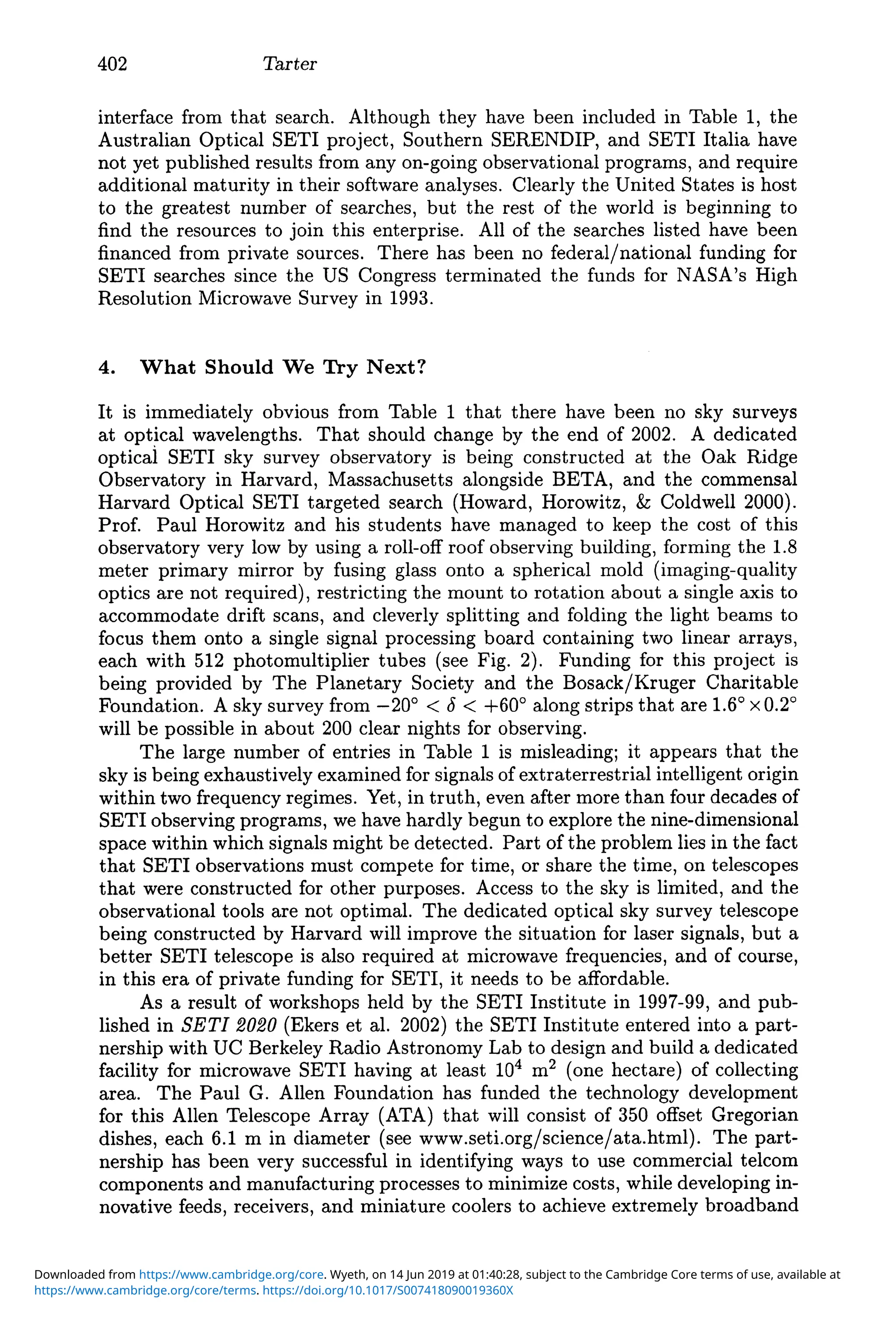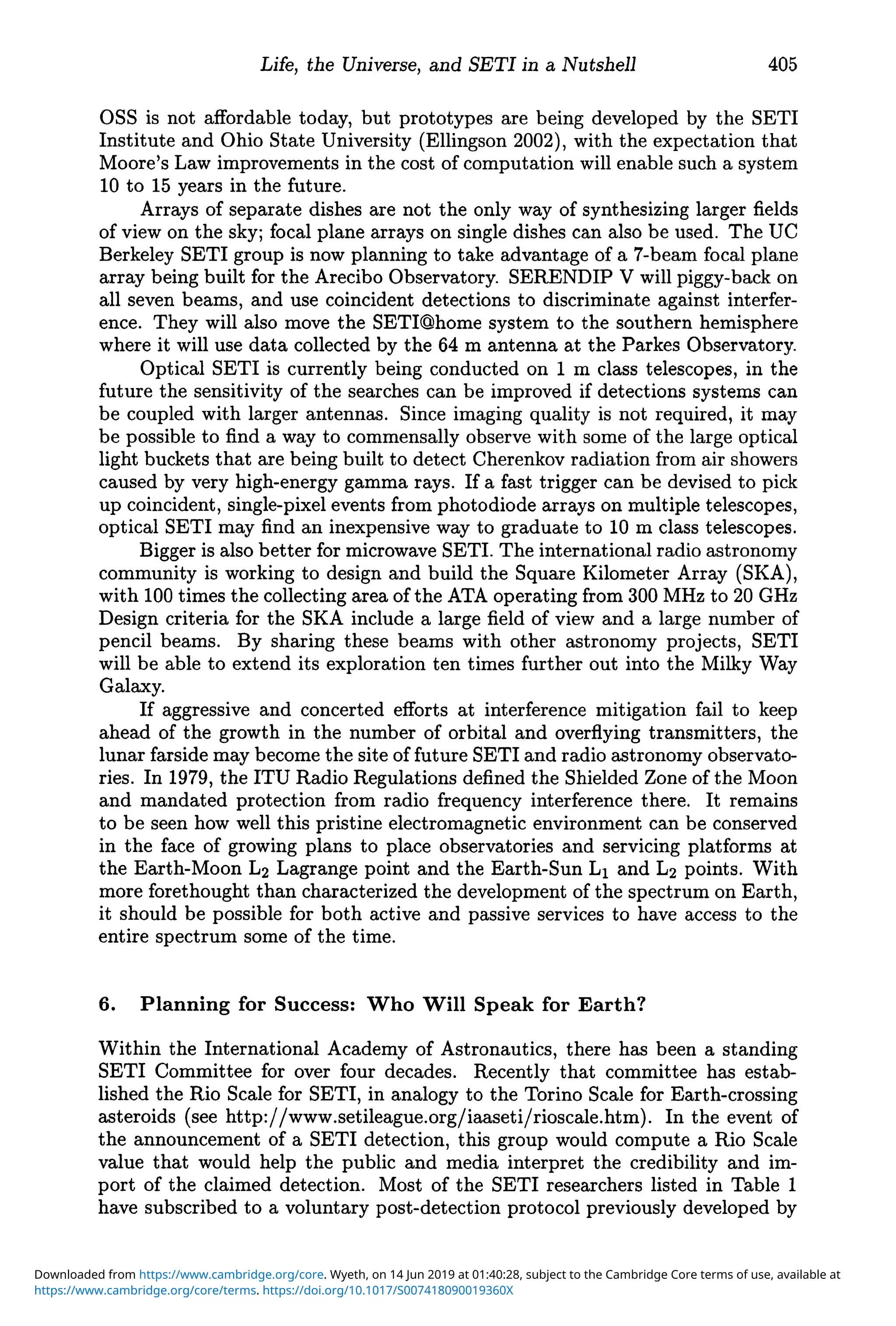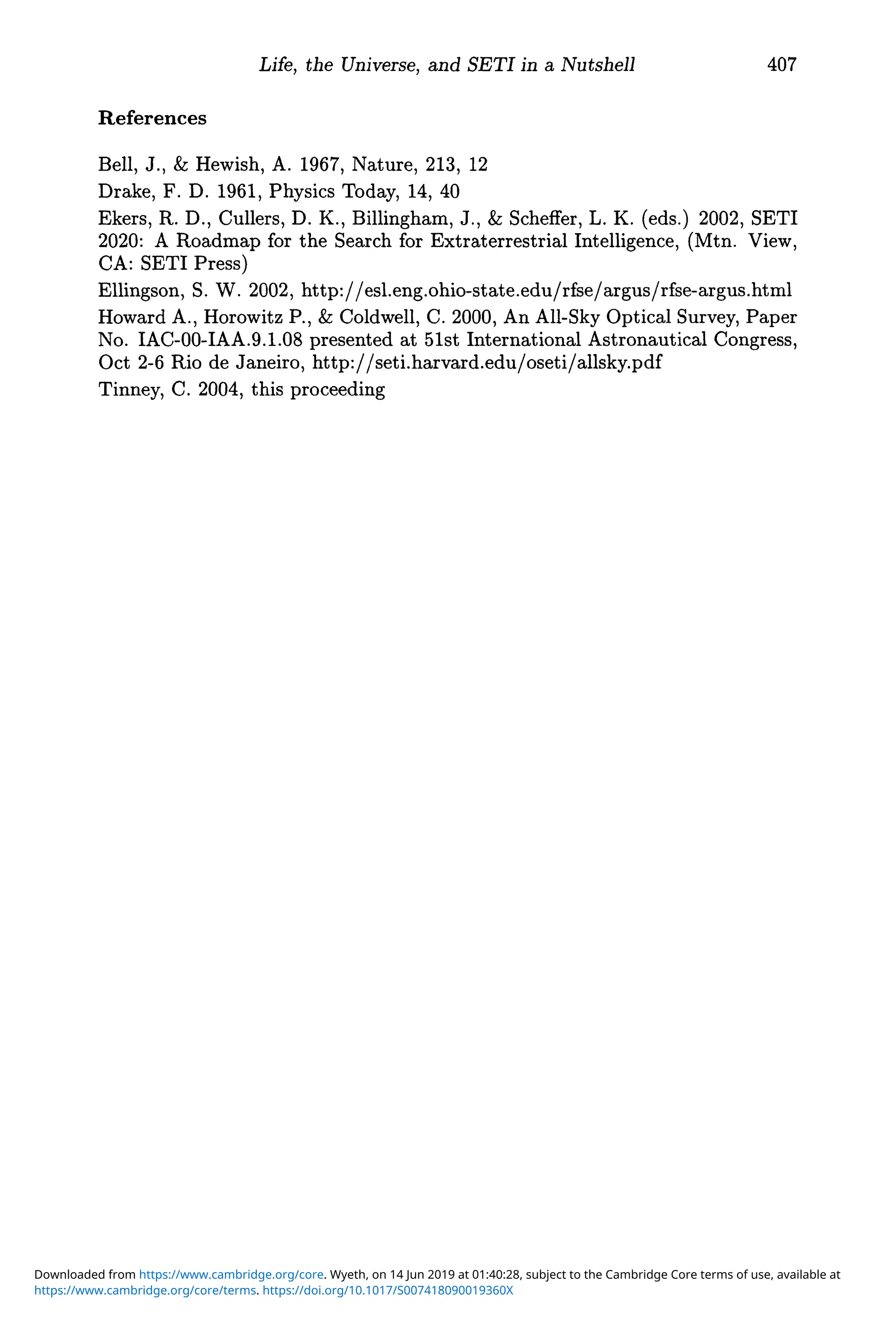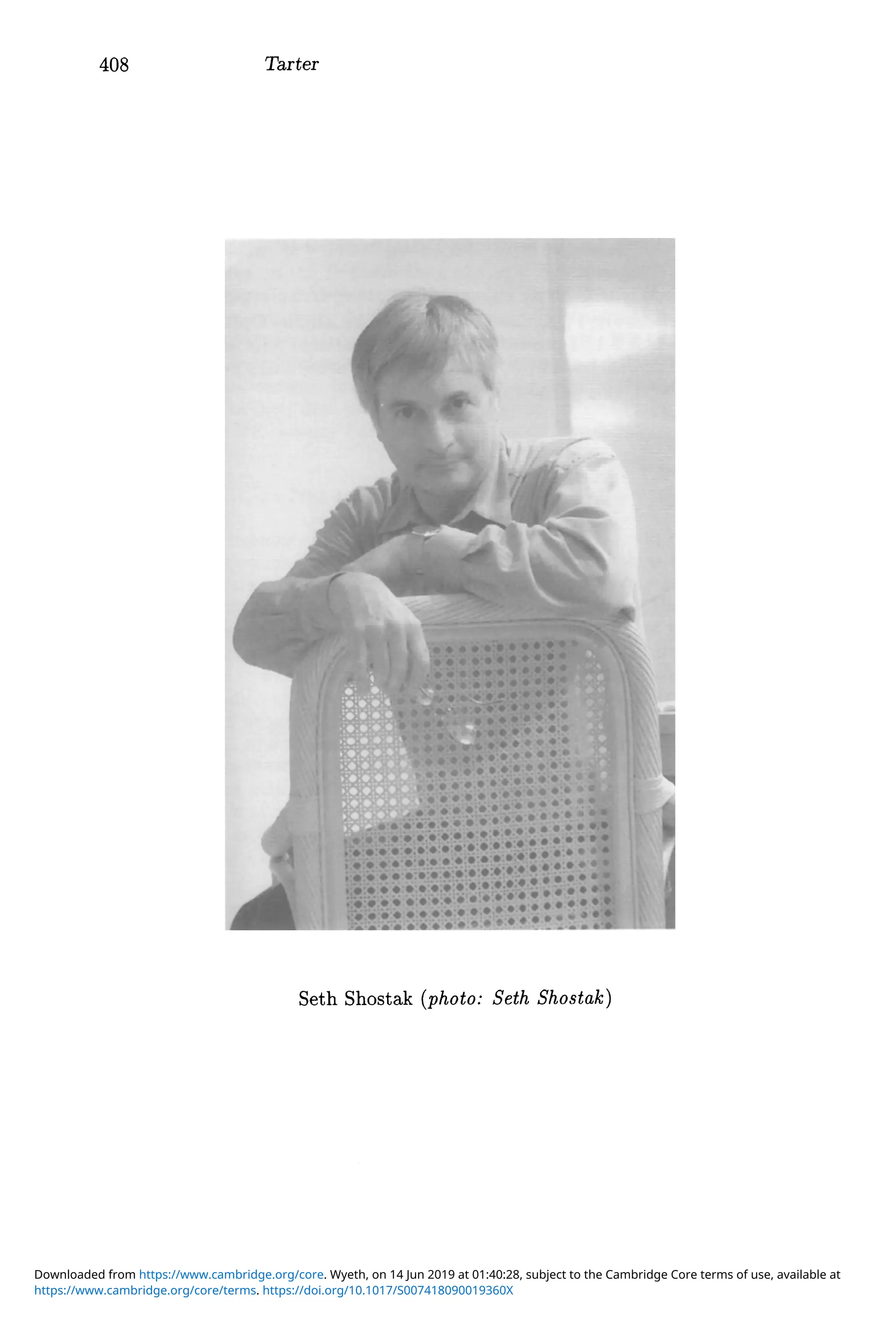This paper discusses the current state of SETI (Search for Extraterrestrial Intelligence) programs worldwide, detailing the definitions of life, intelligence, and SETI itself. It emphasizes that no unambiguous evidence of extraterrestrial technology has been found, outlines various observational strategies for detecting signals, and notes the limitations of existing technology in identifying less advanced civilizations. The paper concludes with insights on the types of signals that may indicate extraterrestrial technology, and the ongoing initiatives to improve SETI search methodologies.
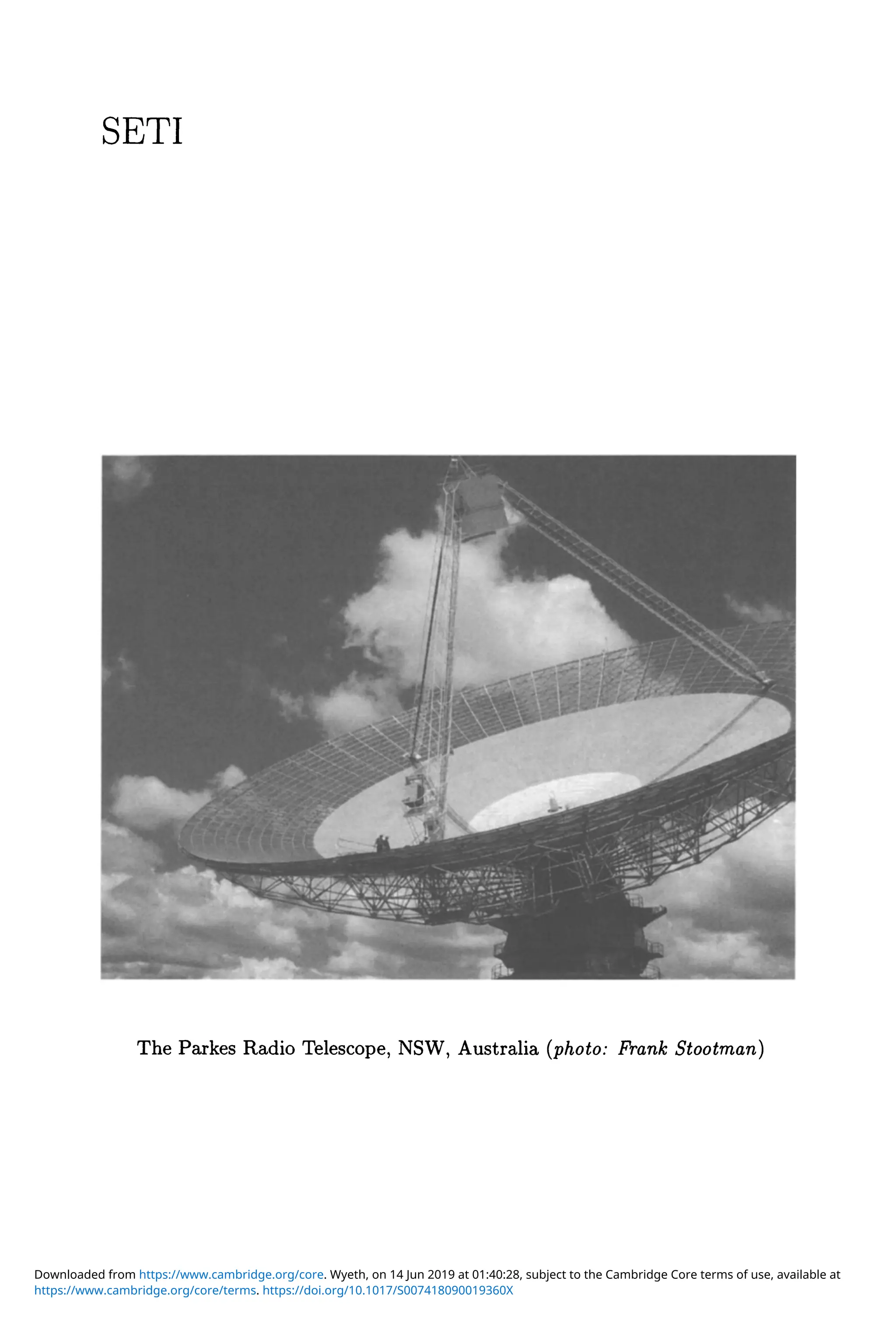
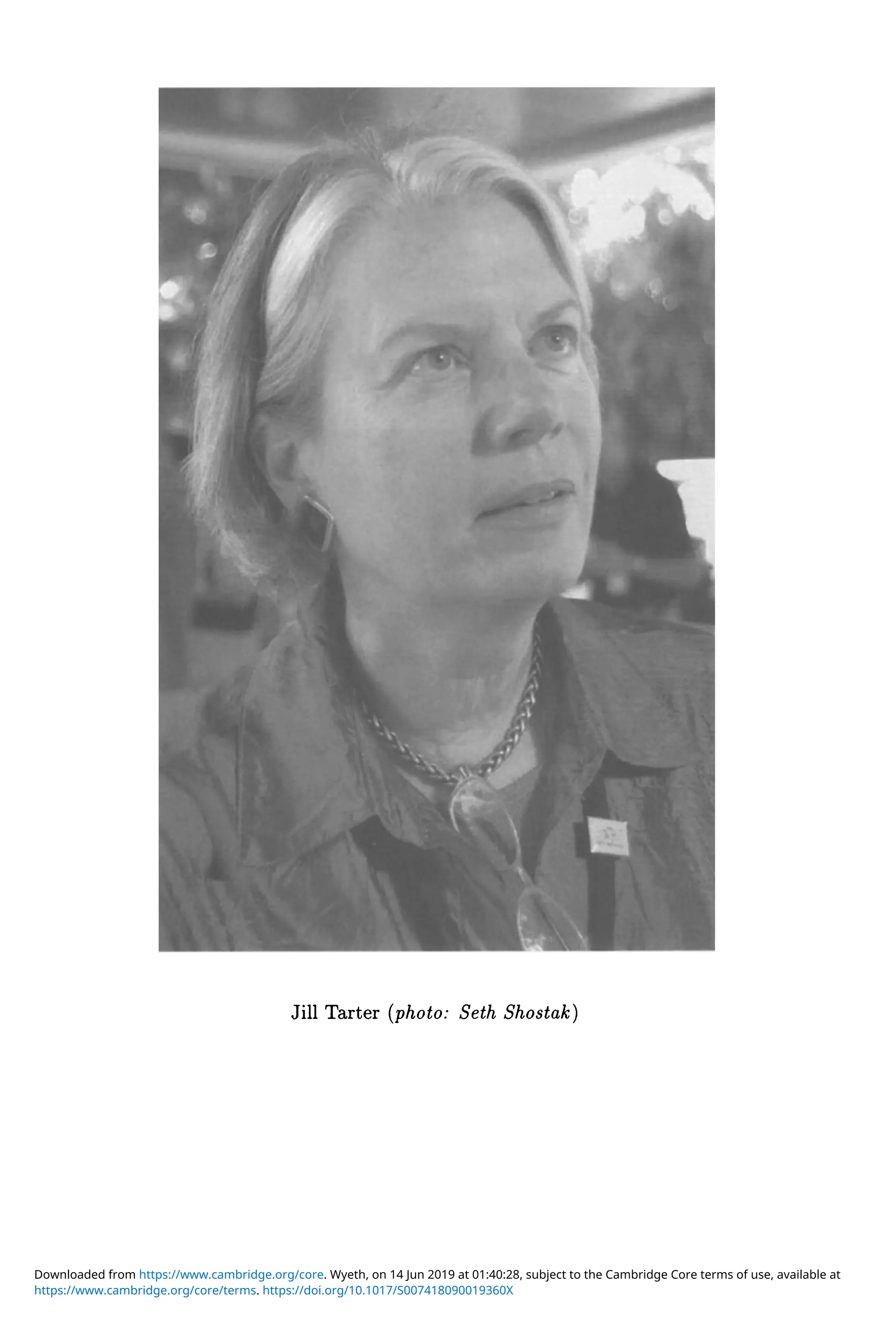
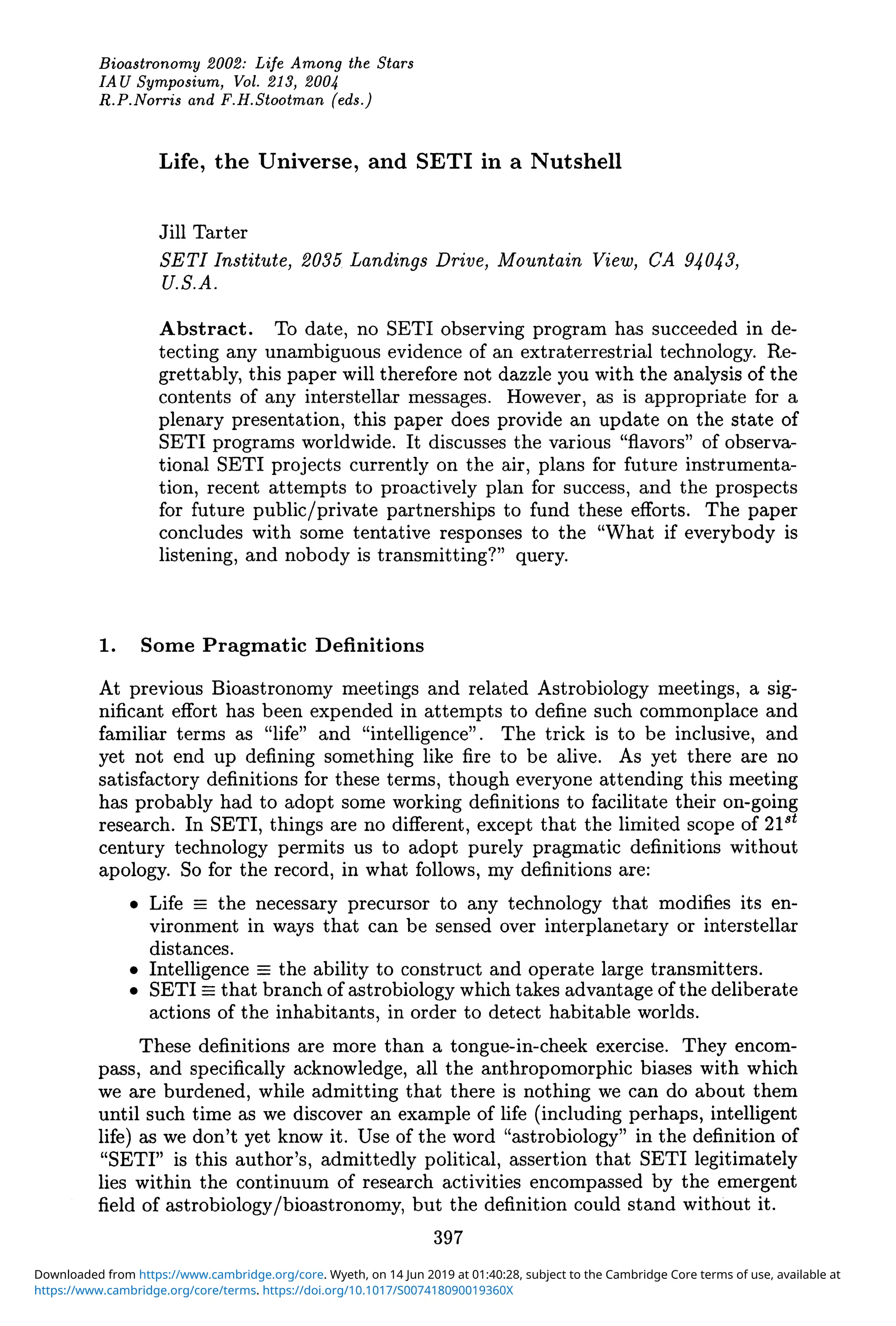
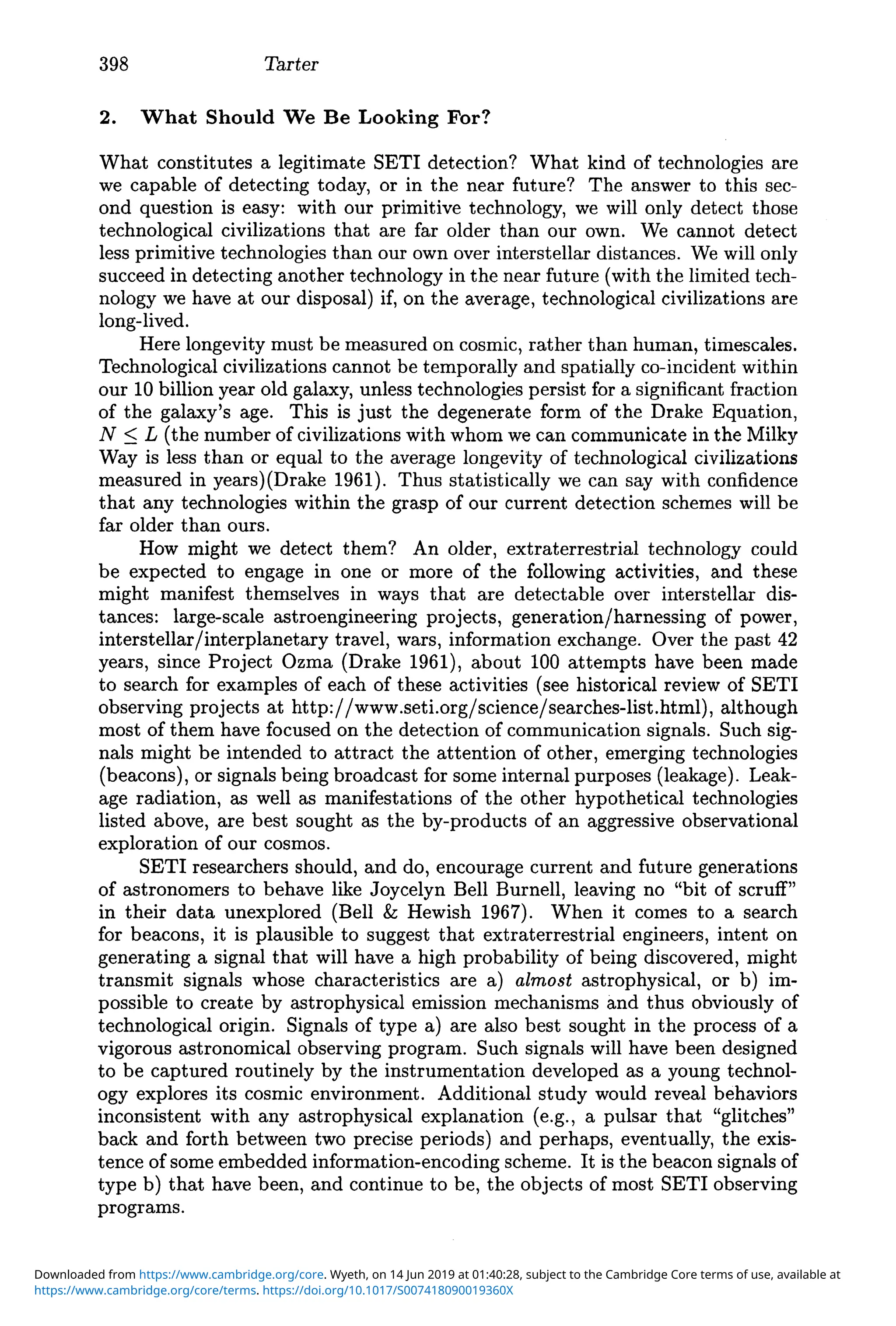
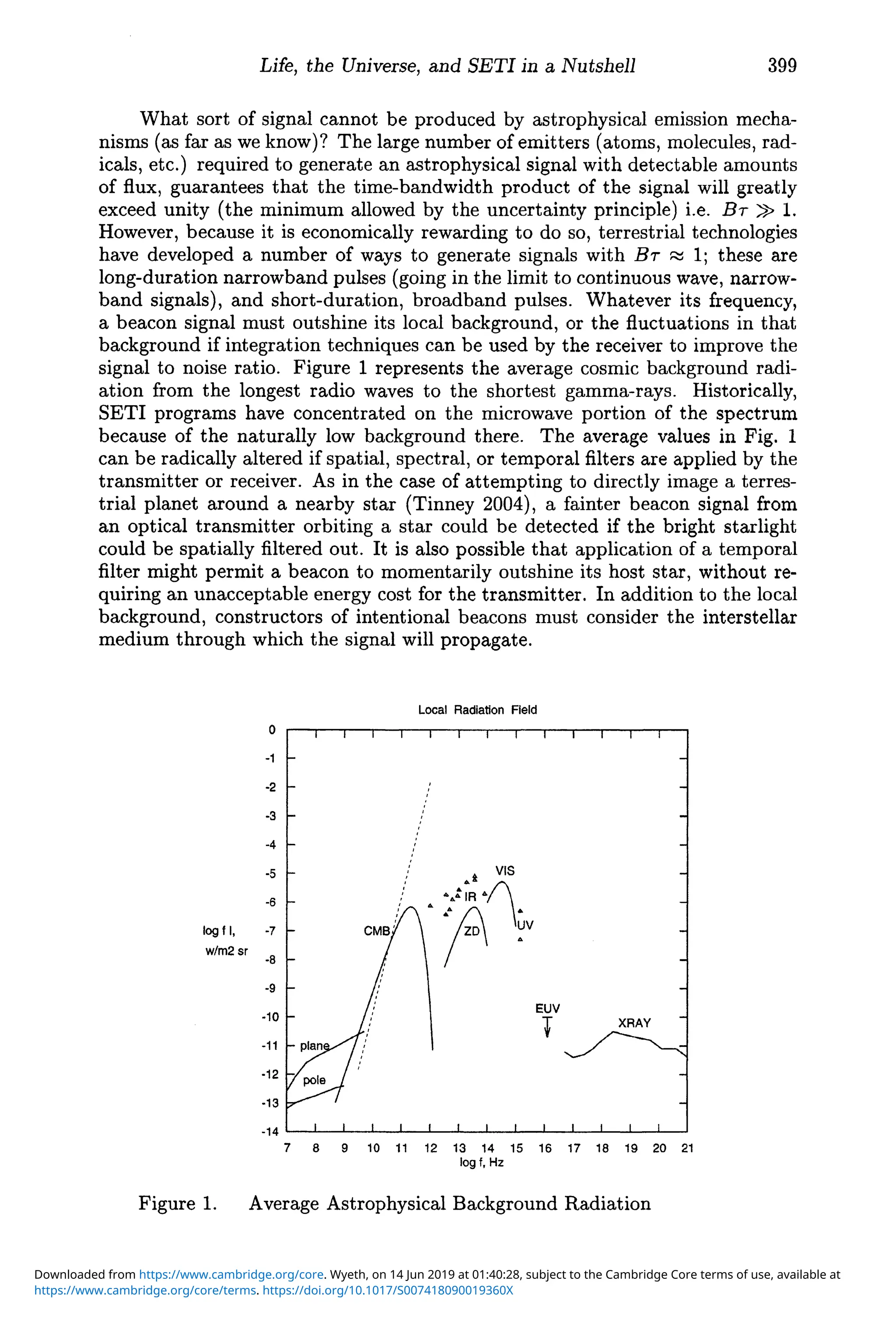
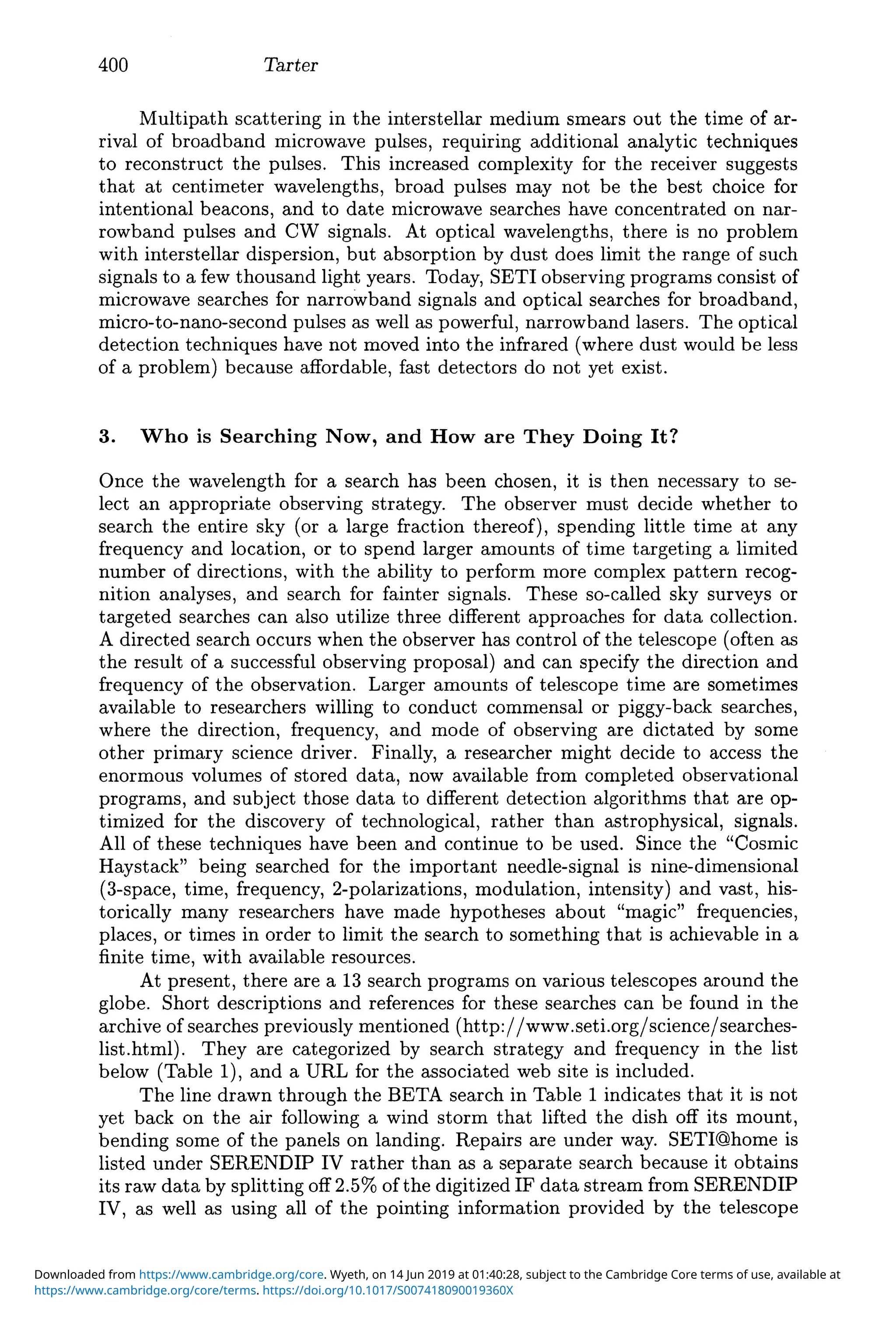
![Life, the Universe, and SETI in a Nutshell
Table 1. Searches on Telescopes Today
TARGETED SEARCHES
Type Microwave
D SETI Institute Project Phoenix
(http://www.seti.org)
Type Optical
D Berkeley Optical SETI
(http://sag-www.ssl.berkeley.edu/opticalseti)
C Harvard Optical SETI
(http://mc.harvard.edu/oseti/index.html)
D Lick Optical SETI
(http://setLucolick.org/optical)
D & C Princeton Optical SETI
(http://observatory.Princeton.EDU/oseti/)
D Australian Optical SETI
(http://www.atnf.csiro/pasa/17_2/bhathal/paper.pdf)
A Exoplanet Archive Optical SETI
(http://www.physics.sfsu.edu/ areines/seti/htrnl]
SKY SURVEYS
Type Microwave
C SERENDIP IV
(http://setLssl.berkeley.edu/serendip/ serendip.html)
also SETI@home
(http://setiathome.ssl.berkeley.edu)
D ~
(http://nic.harvard.edu/seti/beta.html)
D META II
(http://www.planetary.org/html
/UPDATES/ seti/META2/ default.html)
C Southern SERENDIP
(http://setLuws.edu.au)
D SETI League Project Argus
(http:www.setileague.org)
C SETI Italia
(http://boas5.bo.astro.it/ iiniverso
/webuniverso/montebugnoli/monte4.html)
Legend D is a directed search
C is acommensal search
A is an archival search
401
https://www.cambridge.org/core/terms. https://doi.org/10.1017/S007418090019360X
Downloaded from https://www.cambridge.org/core. Wyeth, on 14 Jun 2019 at 01:40:28, subject to the Cambridge Core terms of use, available at](https://image.slidesharecdn.com/lifetheuniverseandsetiinanutshell-240204192631-46d0a8cd/75/Life-the-Universe-andSETI-in-a-Nutshell-7-2048.jpg)
